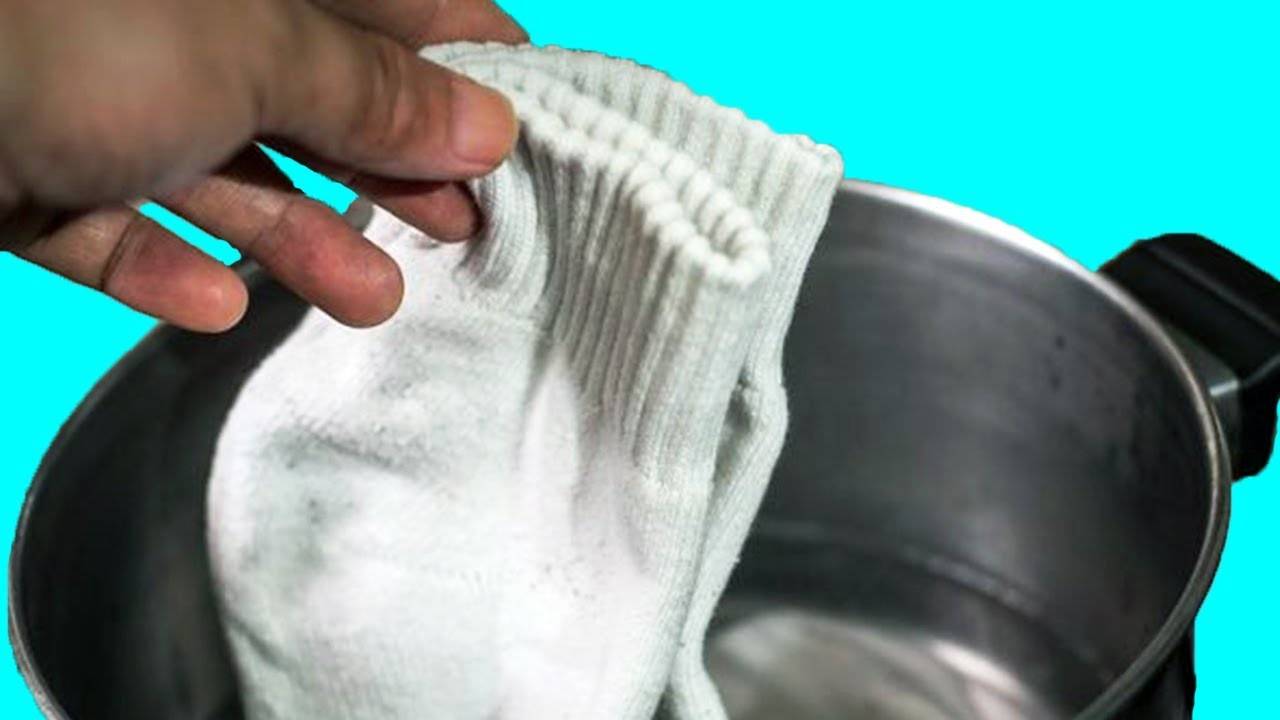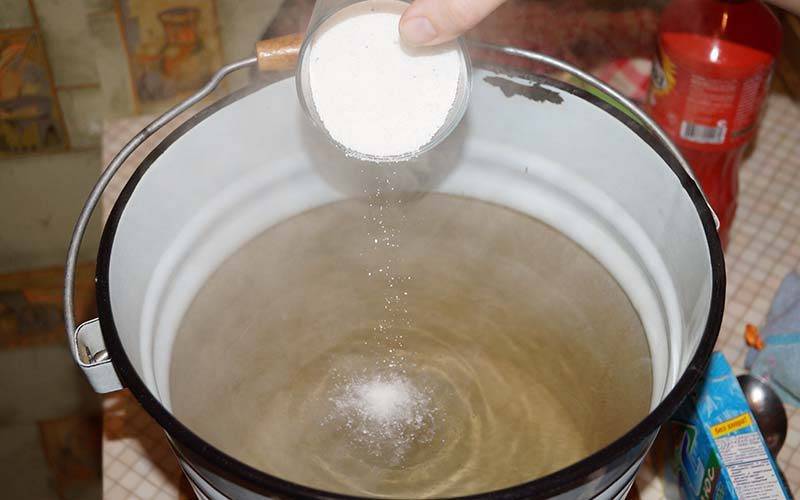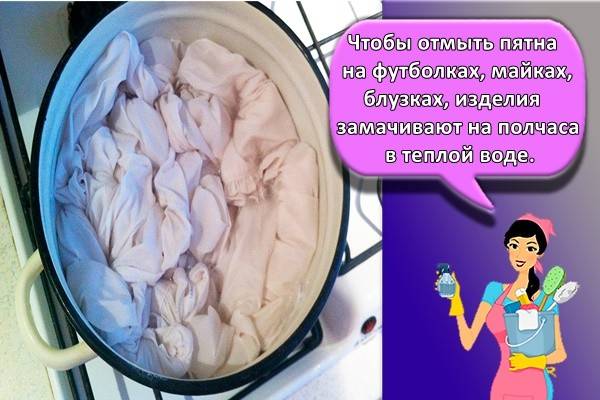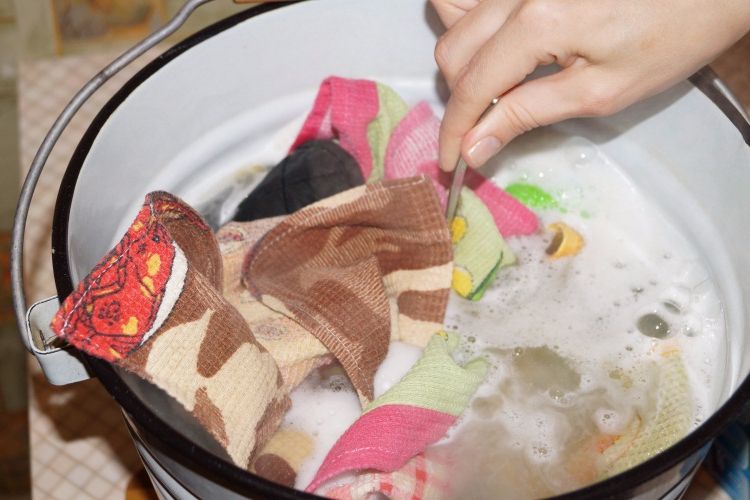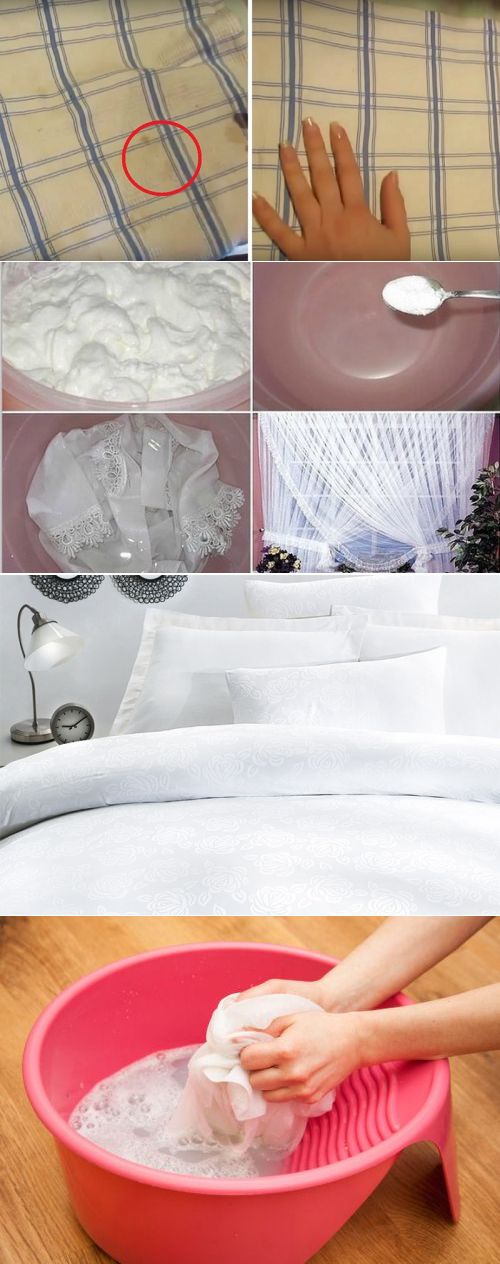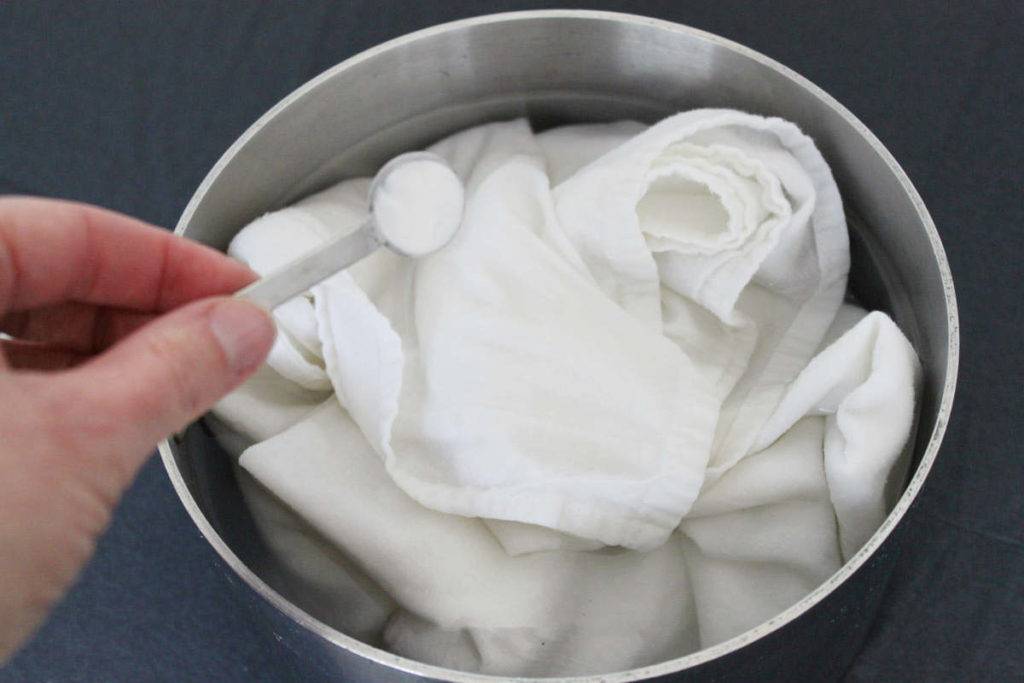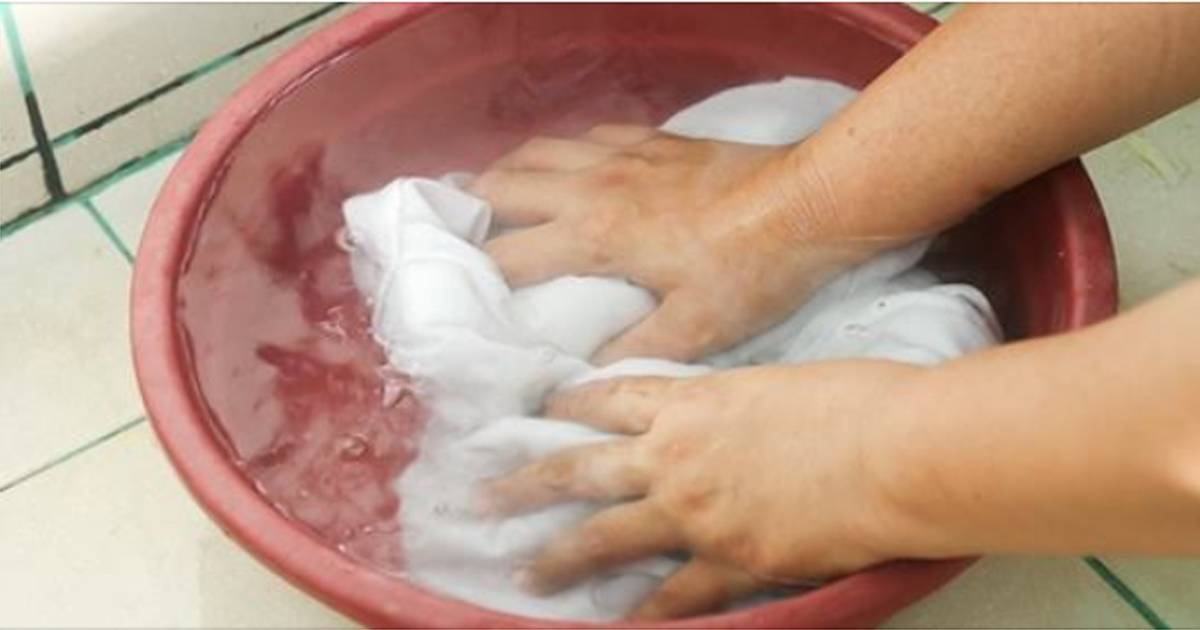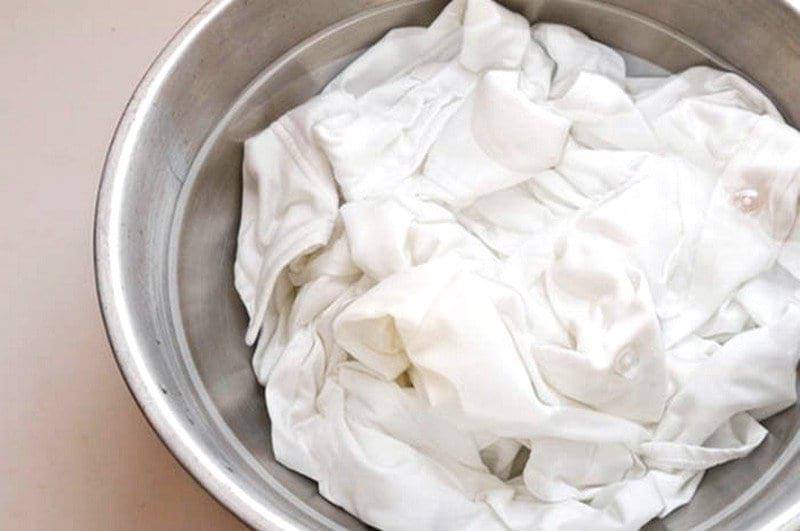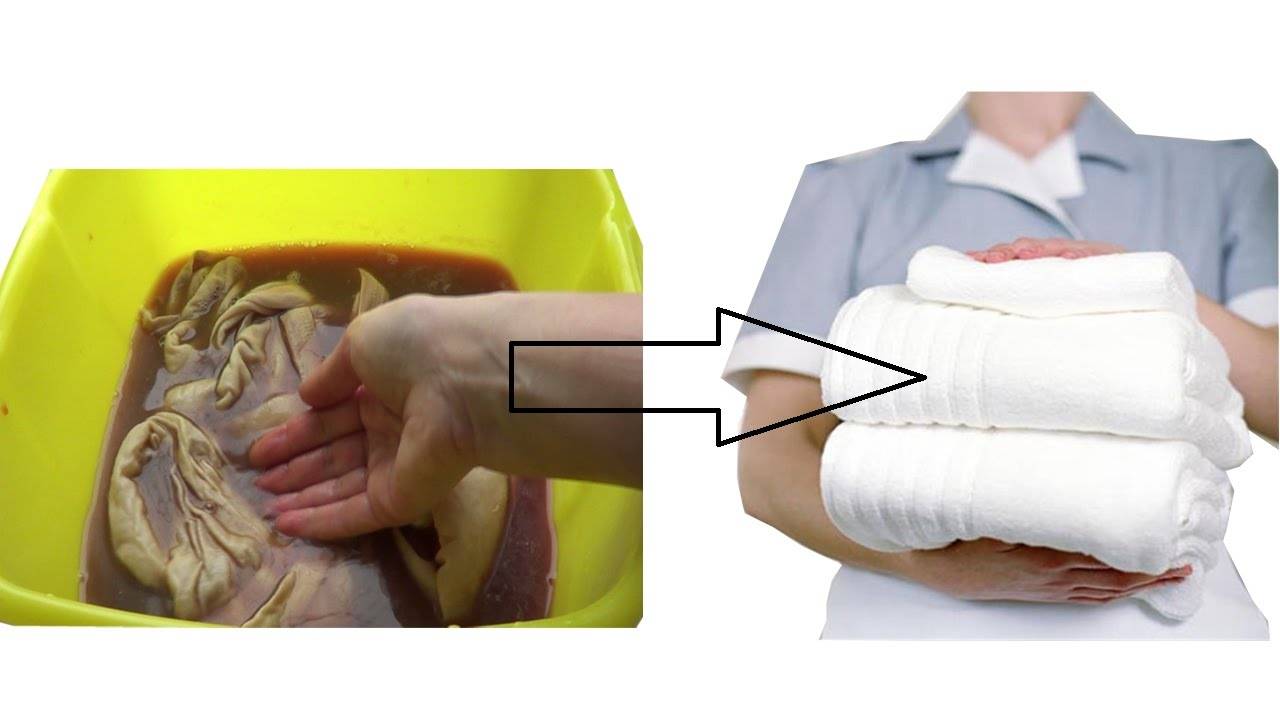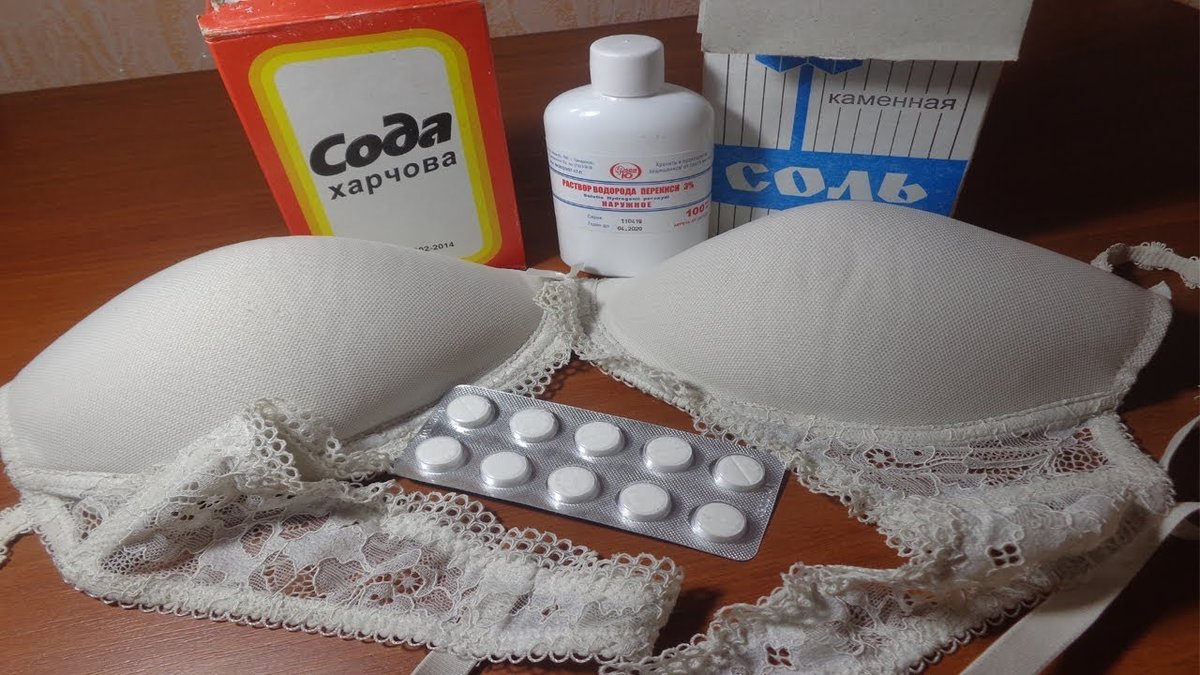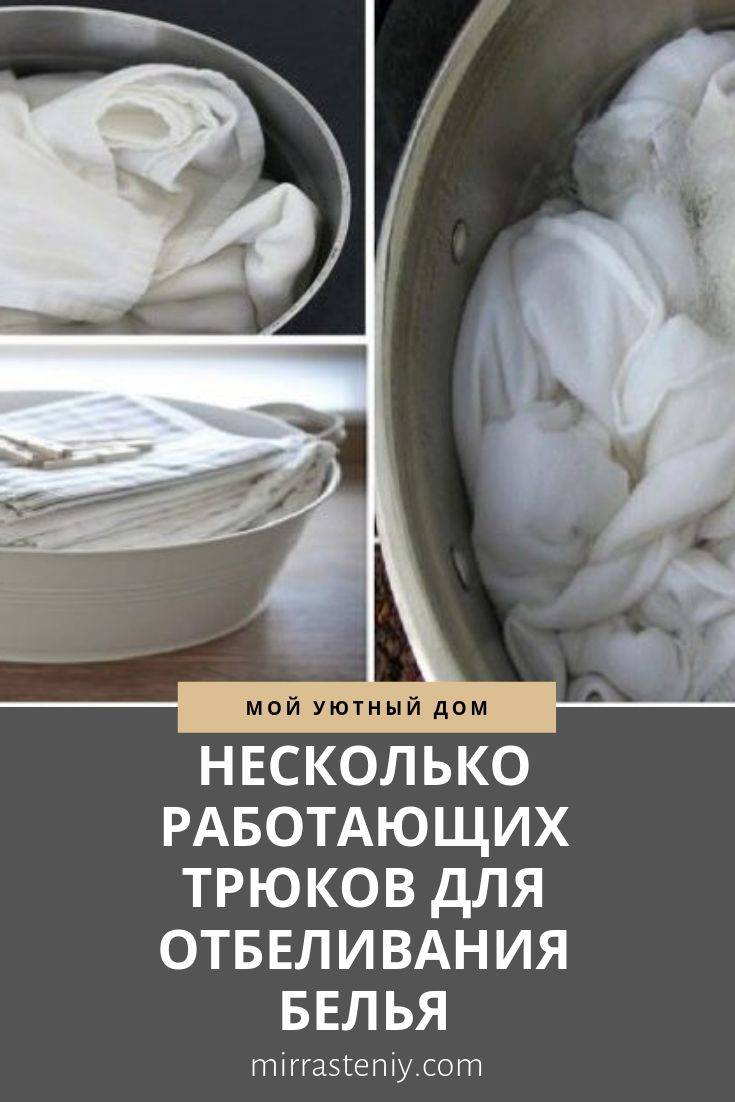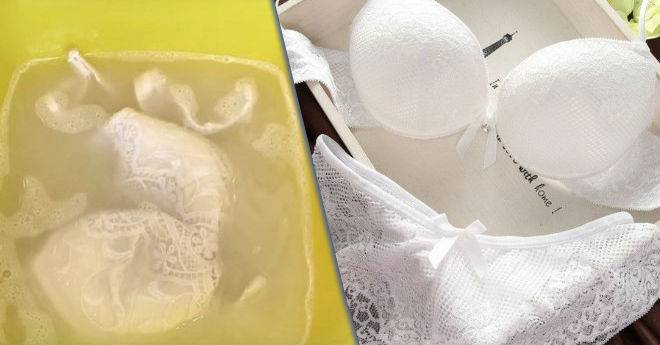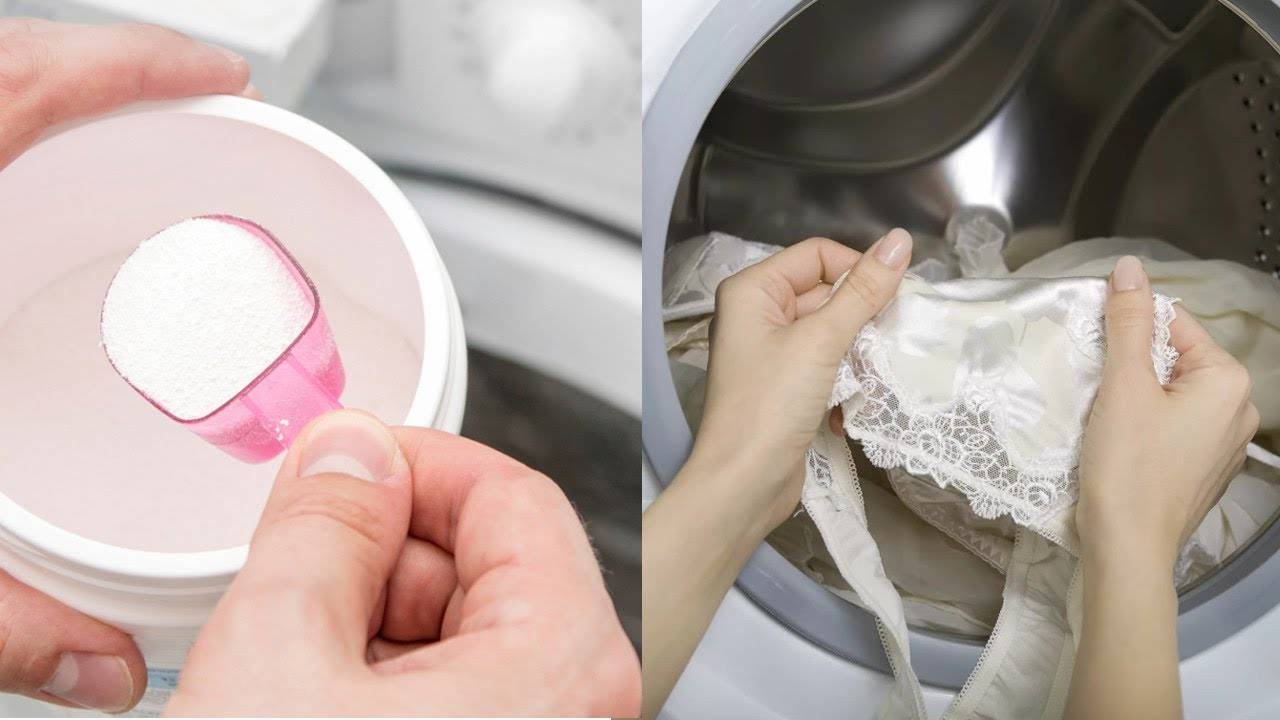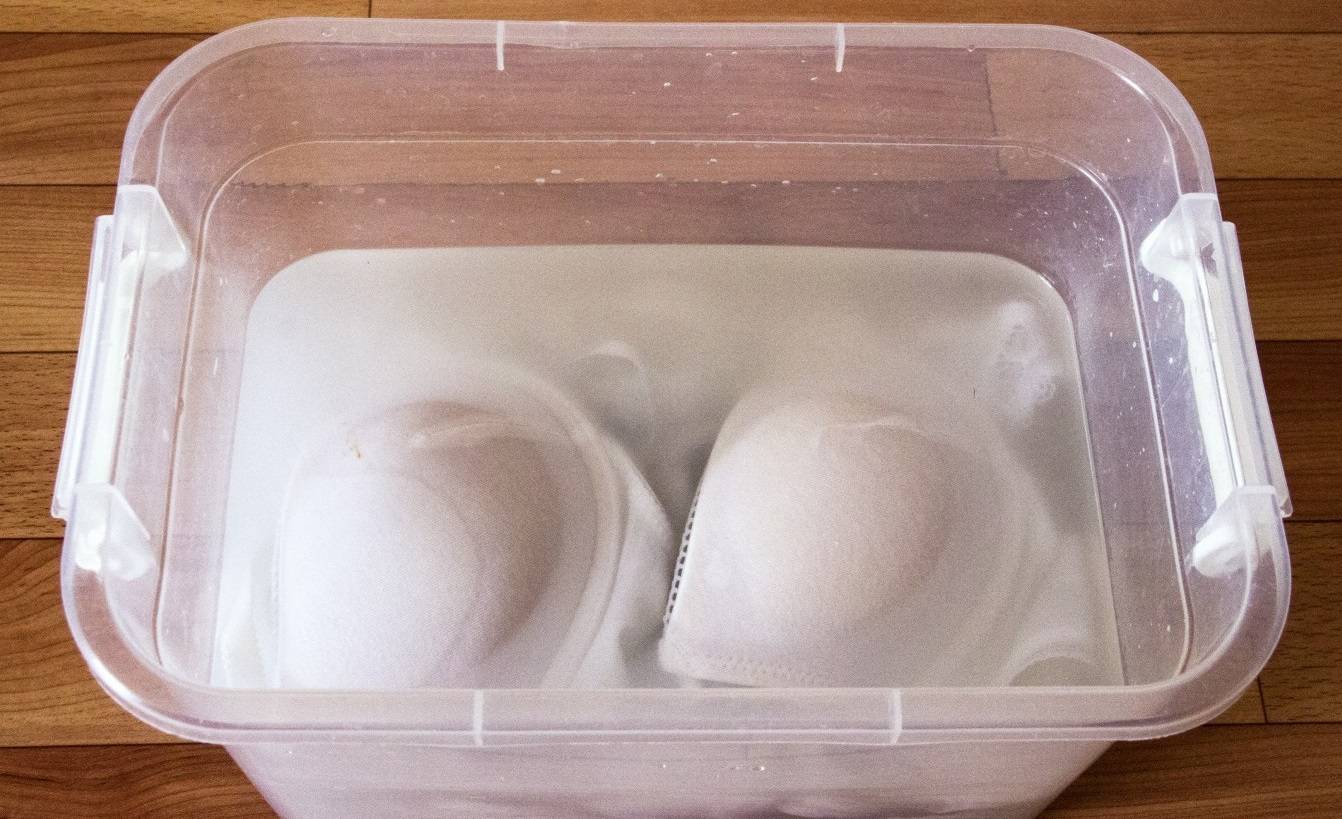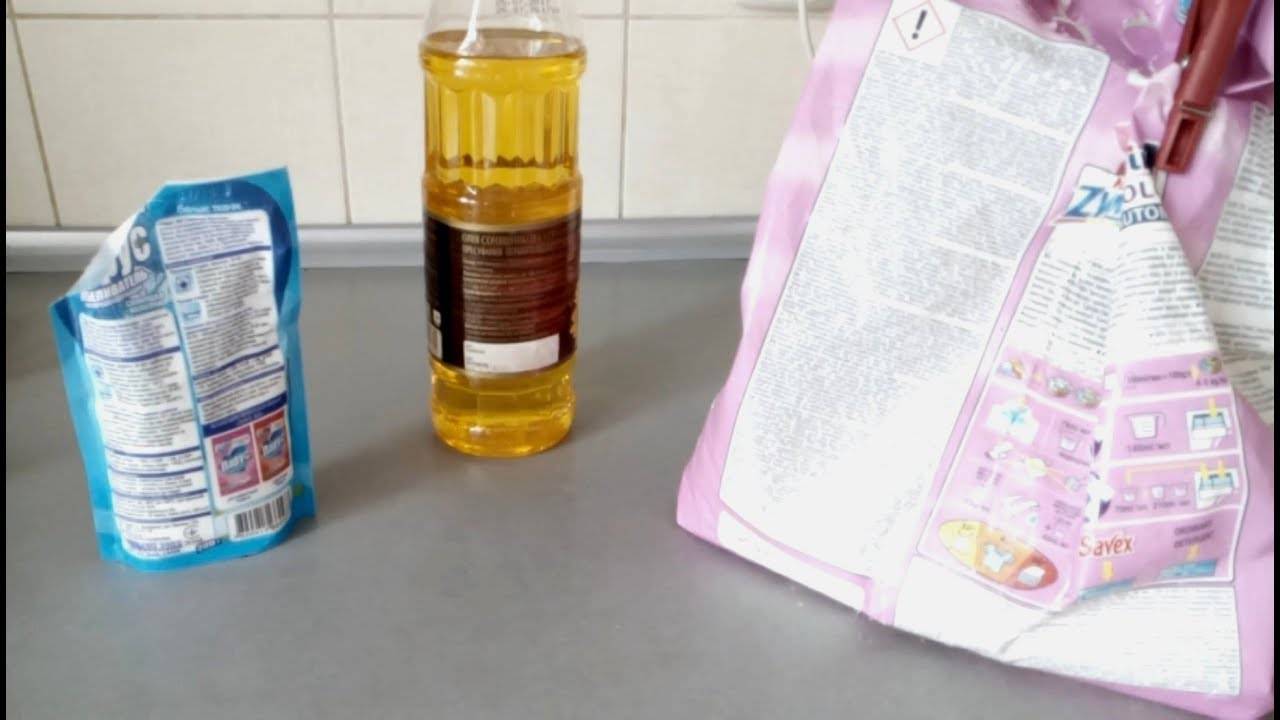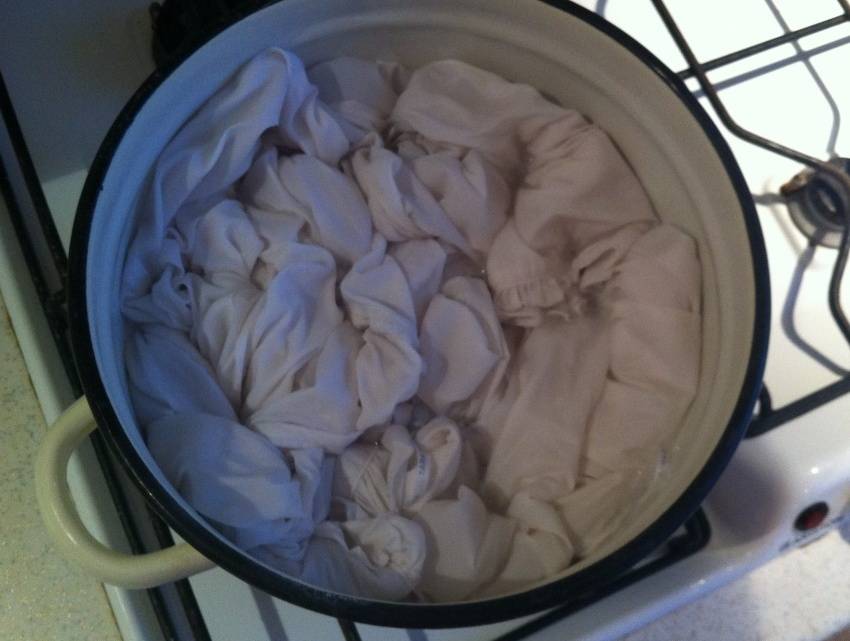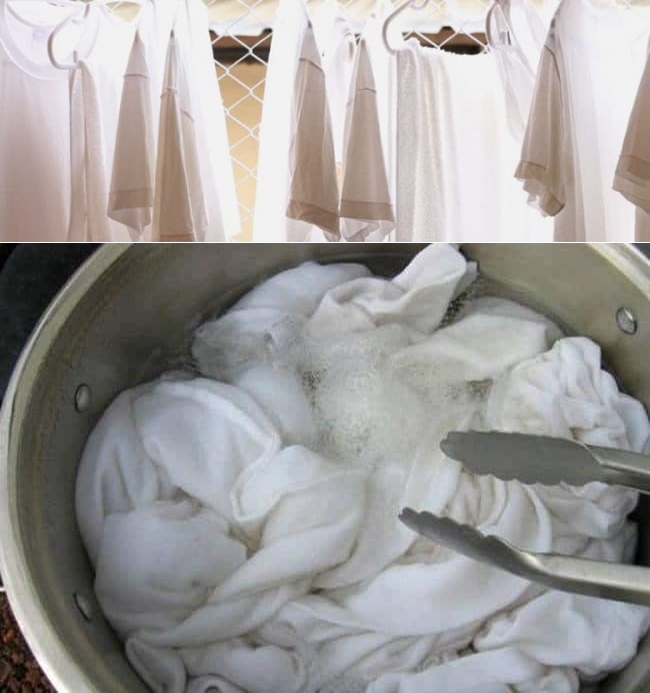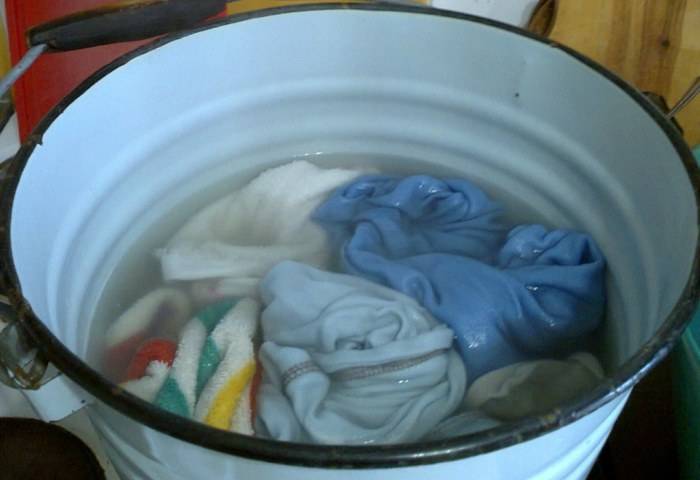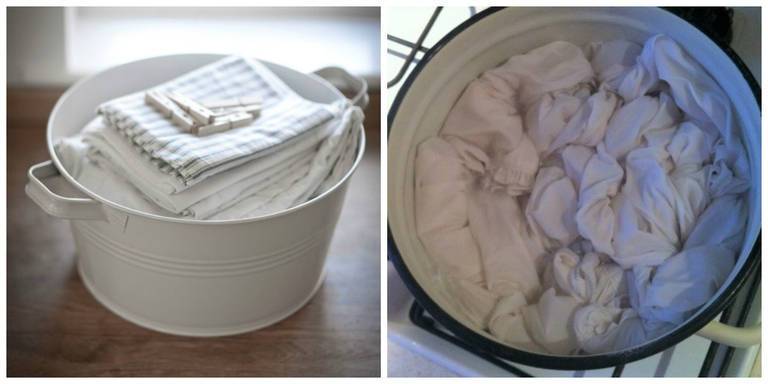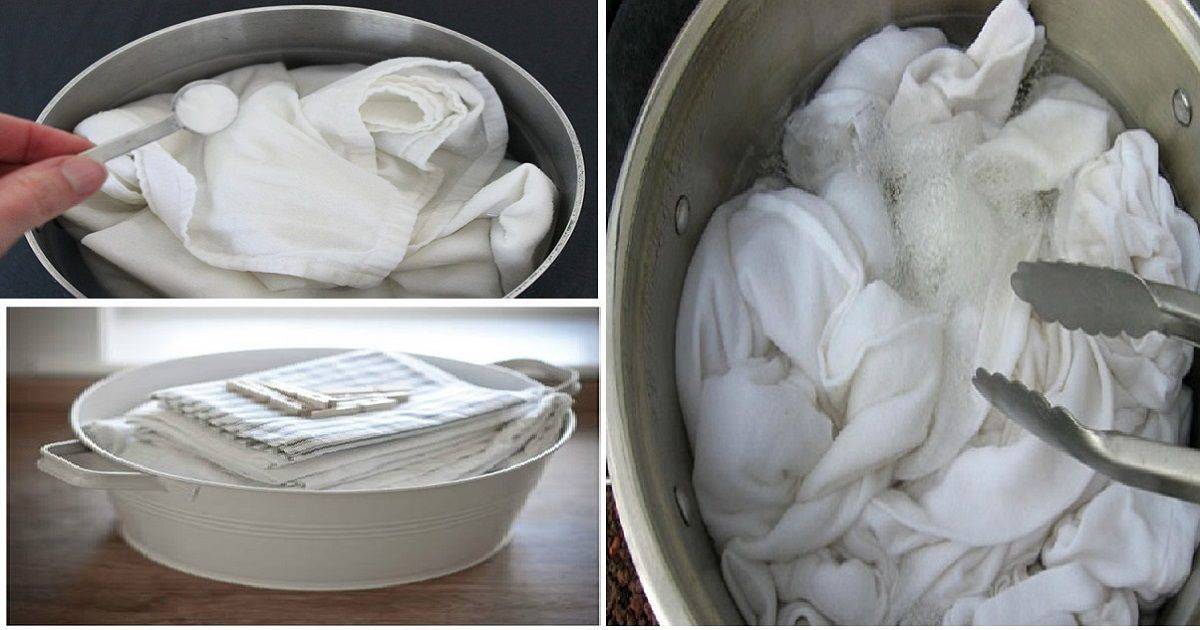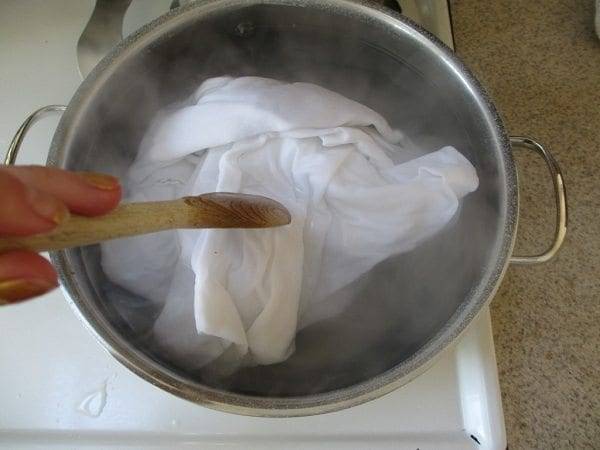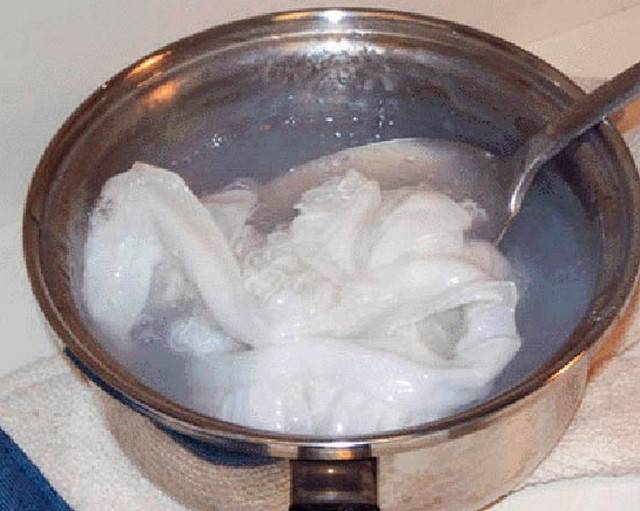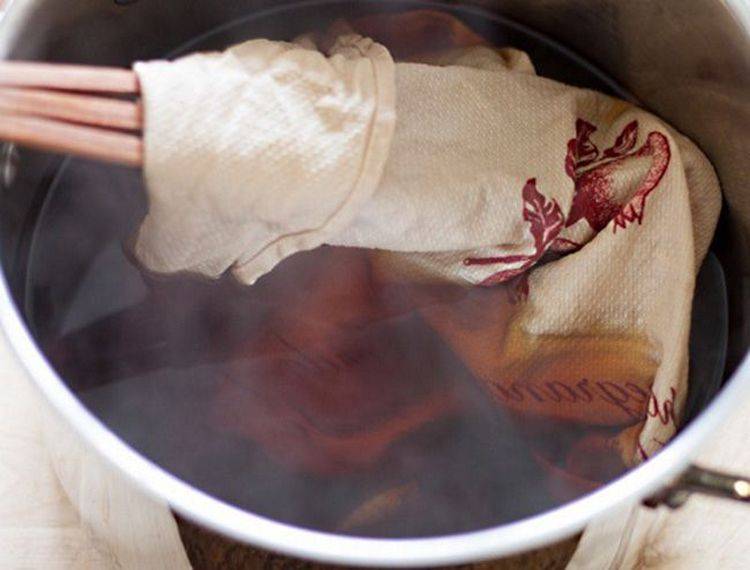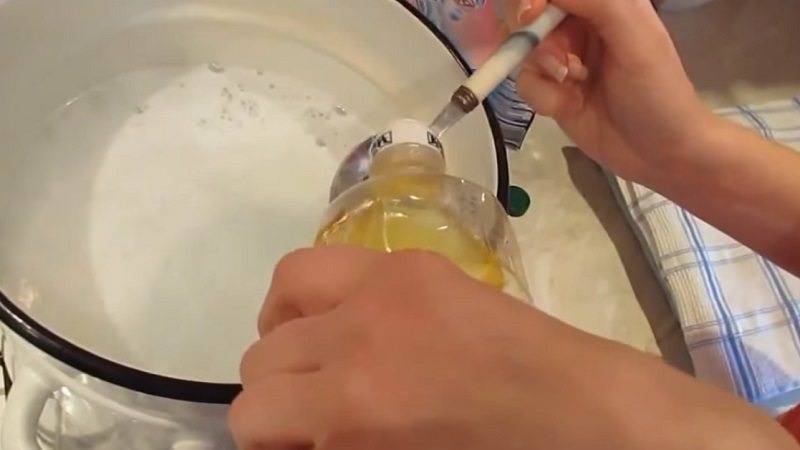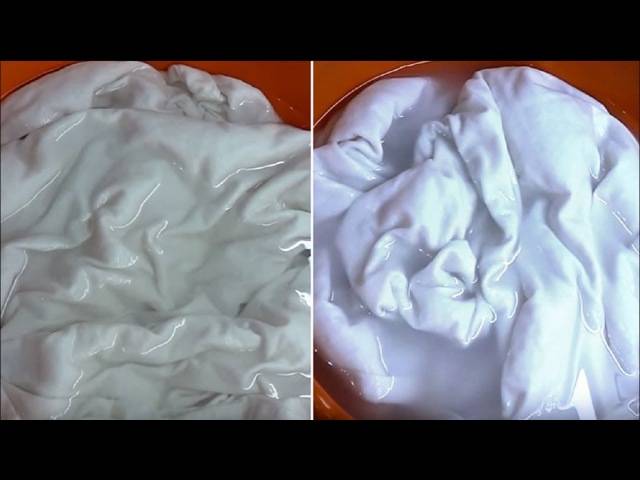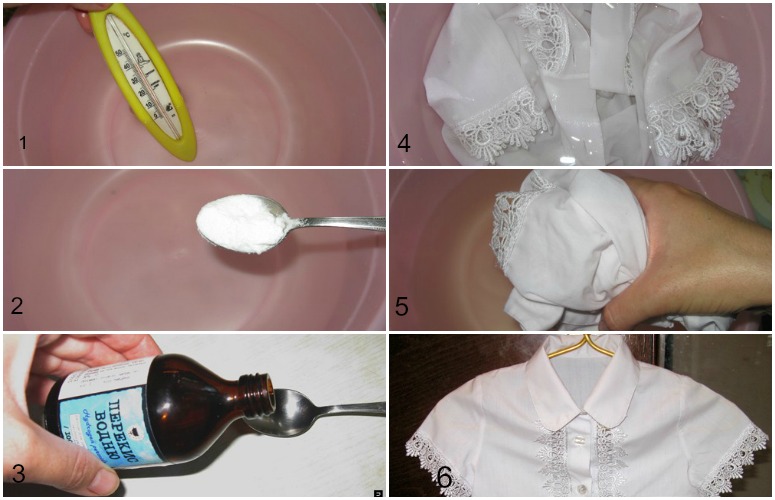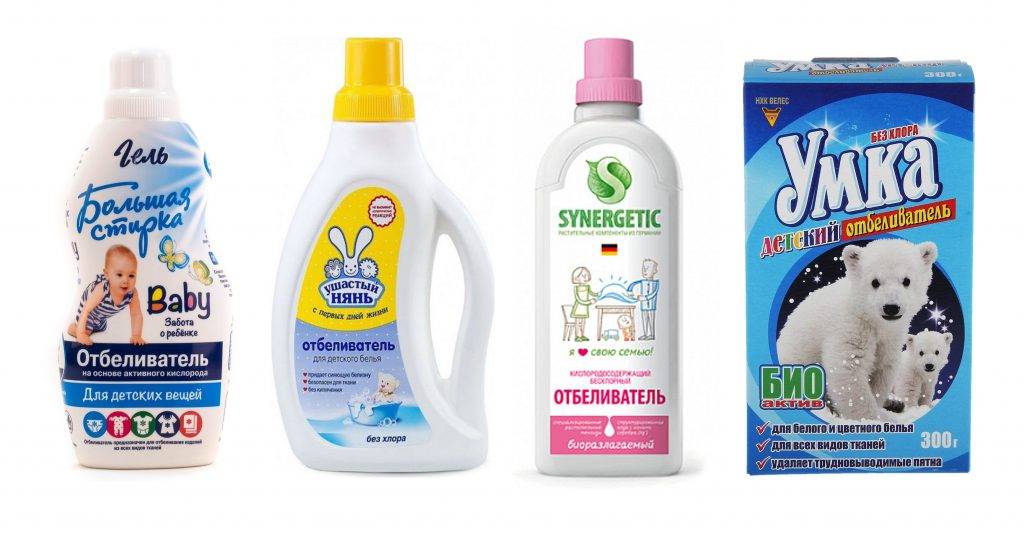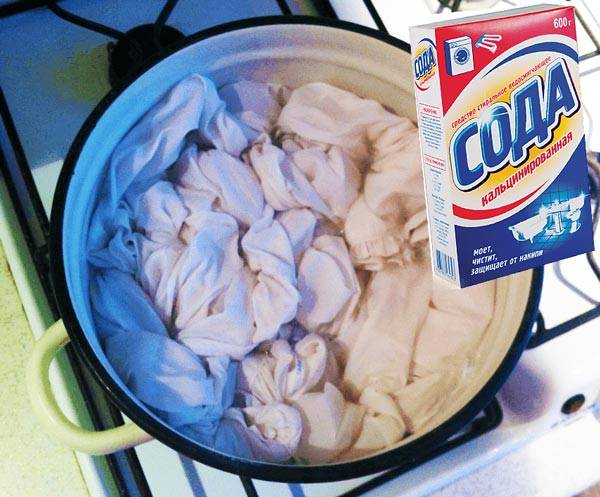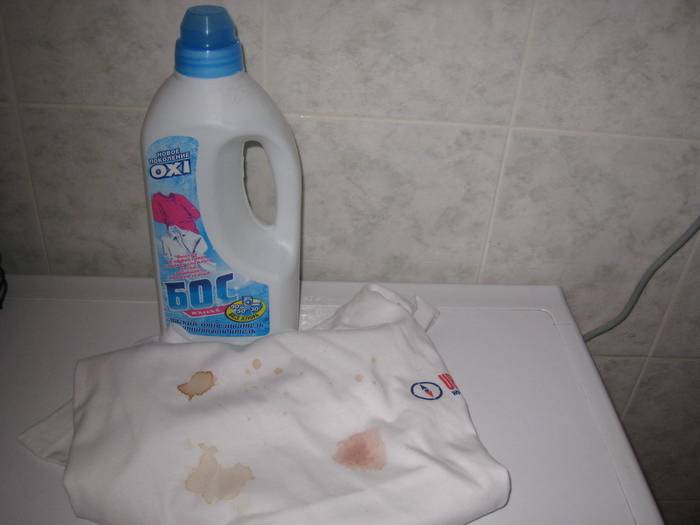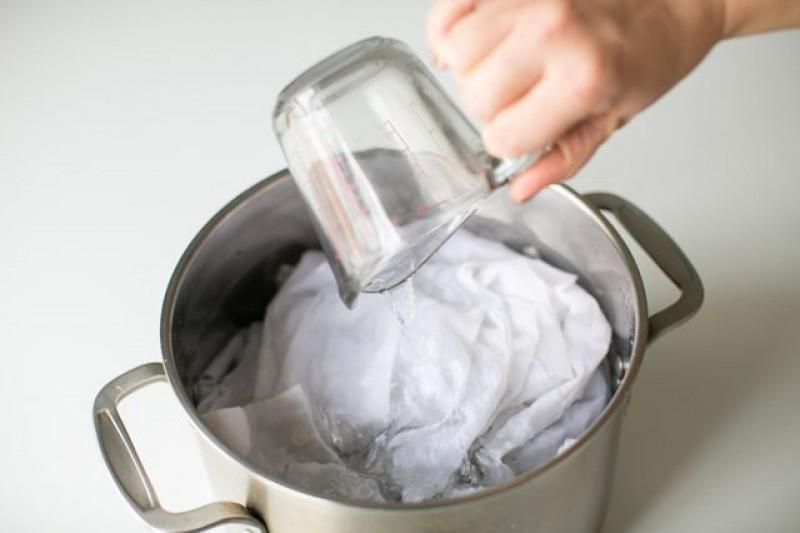Can boiling spoil things?
Boiling is the same wash in water at a temperature of about 100 ° C
Is it possible to spoil a thing under such conditions? This is quite realistic, so you should pay attention to the recommendations that are published on the tags. For example, things made of cambric should never be boiled, they immediately begin to stretch and tear, even if chlorine and other harsh chemicals were not used as a cleaning agent.
If, nevertheless, it is allowed to boil the laundry, according to the manufacturer's instructions, but there is still a possibility of spoiling the thing, then, in addition to soap, only soda ash should be added to the solution. While this will not remove any stains, the laundry will definitely not deteriorate.
Of course, it is not allowed to boil colored things. Can be monochromatic, but it should be understood that boiling can lead to fading. That is, this option for dealing with stains is only suitable for a robe or those things that are customary to wear at home.
Do housewives boil linen now? Although less and less often, they use this method. It is especially relevant in cases where it is necessary to remove old stains that do not lend themselves to stain removers. But it is also suitable for children's clothes.
Traditional methods of whitening
It so happens that there is no traditional bleach in the house. Then you can turn to non-traditional methods of whitening. Some of the products were also used by our grandmothers, others are identical to industrial ones, just cooked at home.
Hydrogen peroxide
Hydrogen peroxide will serve to whiten clothes
- Add hydrogen peroxide to the washing powder during washing in the machine (10 ml per 25 liters of washing powder or gel for five minutes at a temperature of 70-80 degrees). If conditions cannot be met, wash by hand.
- To bleach your underwear, mix three tablespoons of 3% peroxide in 12 liters of hot water. Soak clean laundry in the solution for one hour, then rinse and dry as usual.
- To bleach woolen and silk items, it is necessary to prepare a solution: for 12 liters of warm water 250 gr. salt, 30 gr. washing powder and 1 liter of hydrogen peroxide. Soak things for 3-4 hours, and then rinse well.
- For washed things, the following method is suitable: rub the thing with laundry soap and put it in hot water. Add hydrogen peroxide to the water at the rate of 40 ml per 5 liters of water. Bleach in this way for 3 hours and then rinse the laundry.
- To restore the original whiteness to the gray tulle, add 1 tbsp of water to 10 liters of water. l. ammonia and 2 tbsp. l. peroxide. Soak for 5 minutes, then rinse in cold water. In a similar solution, you can boil bed linen. (35 grams of ammonia and 35 grams of peroxide are added to an aluminum or enamel bowl with water, boiled for 40 minutes).
- In combination with lemon juice, peroxide removes yellow stains on synthetics. The juice of one lemon is mixed with 1 tsp. peroxide and applied to stains, rinsed after 30 minutes.
Boiling
An old grandmother's method is boiling. The method is really effective if done correctly. Only cotton and linen items can be boiled. For boiling, a zinc or enamel container is suitable, at the bottom of which a white cloth is placed. Powder or soap dissolves well in water, and the stains are lathered.
Instead of boiling powder, you can use a mixture of grated laundry soap and soda ash (lye) in a 1: 1 ratio. Another solution is to mix one teaspoon of bleach with a liter of water, stand, add a clear solution to boiling water.But this product can damage the fabric, be careful!
If you do not want to buy a targeted action product, use your own prepared formulations.
# 1. Soda
1. The method is delicate and safe. Soda is used in several ways: add 50 gr. in the second compartment of the machine, pour the powder into the first. Or make a bleach solution.
2. In this case, combine 300 gr. powder with 10-12 liters. water, let the granules dissolve. Lower your bras and panties for 2-3 hours, then wash thoroughly.
1.In order to increase efficiency, ammonia is mixed with soda. The composition is suitable for lace and other delicate materials.
2. So, the solution is made as follows: 10 liters. water accounts for 0.4 kg. soda and 60 ml. ammonia.
3. The product is soaked in this product for about 2 hours, in the end, do not forget to wash the clothes.
No. 3. Peroxide
1. Another option is how to whiten delicate underwear. If you have peroxide at home, then measure out 60 ml. preparation and combine with 10 liters. water.
2. Optionally, you can enter ammonia in the amount of 25 ml. Dip the underwear into the prepared composition and wait for a third of an hour. Finish by washing your garments several times in clean water.
No. 4. Digestion
1. Not the safest technique, but you can resort to it if you need to bleach cotton / linen.
2. Fill the enamel bucket with water not to the brim. Add shavings from 1/3 of a bar of laundry soap.
3. Dampen things, rub them very hard with soap. Heat the water, dip the products inside and cook for 45 minutes. Remove and send to the machine.
Detergents for boiling laundry
Many stubborn stains can be removed from fabrics with simple products found in every home. One of them is potassium permanganate. Its dark crystals, which color the water crimson and even purple, are an excellent whitening agent. Potassium permanganate was widely used in the days when there were no baby diapers. However, its relevance has not been lost today. Linen soiled with feces from infants or bedridden patients can be cleaned by boiling with potassium permanganate.
To remove stains, the crystals are dissolved in water, and the solution is poured into a separate container so that the undissolved grains do not spoil the fabric. The pink liquid is poured into a boiling container, 100 g of grated laundry soap or a glass of washing powder is added, water is added to the desired level and the linen is boiled in it. Usually after 1-1.5 hours, all stains are washed off.
This method is interesting in that it is suitable for different fabrics, if boiling is replaced by soaking. Things with grass stains, rust, ballpoint pen paste, even oil are placed in a solution of soap with potassium permanganate. The soaking time is 8 hours, after which it is enough to rinse the items.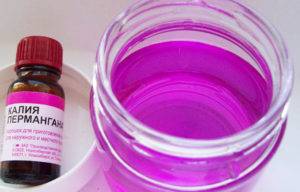
A mixture of soda and salt has excellent whitening properties. These completely harmless substances, when boiled, remove old residues from the fibers of the fabric and return them to the lost freshness.
Suitable for boiling and mustard powder. For a long time, housewives have used it to remove greasy stains. For 10 liters of water, you will need 4 tablespoons of powder, it takes 1 hour to boil the laundry.
Boiling is an undeservedly forgotten way to restore old things that have lost their appearance. The number of formulations that can be used for it is enormous. The main thing is not to postpone it. The less worn out the laundry, the easier it is to restore its whiteness.
Boiling steps
Now let's start digesting:
- Fill the container with clean water two-thirds and place over medium heat.
- Wait for the water to be warm. Now you can immerse your detergent in the bowl (pot).
- We immerse the dirty laundry in the container. The less it is, the better it is removed. Cover the pan with a lid and wait for it to boil.
- Now we begin to stir the laundry with tongs.This is necessary so that it does not burn to the bottom and is evenly washed off.
- Watch when things get the desired cleanliness. Now you can turn off the fire.
- Don't take things out right away! Let them cool down, then you definitely won't get burned.
Why do you need to boil laundry
Boiling not only achieves whiteness, it also removes stains. Boiling water helps to disinfect things, to cope with many infections. For example, when boiling, they die:
- influenza viruses - almost instantly;
- pathogens of hepatitis B and C - in an hour;
- anthrax sticks and even spores - in an hour;
- spore-forming tetanus bacillus and spores - after 3 hours;
- Staphylococcus aureus, which causes mastitis and serious illness in infants - almost instantly;
- fungi that cause fungal diseases.
It is useful to process underwear in this way after being in a hospital or maternity hospital. Boiling is recommended to disinfect towels after visiting a public bath, pool or beach. This method is also good if there is an allergic person in the family who cannot stand the smell of washing powder, because you can boil the laundry with soda or laundry soap.
By boiling linen, you can destroy clothing lice and their larvae - nits. This turns out to be relevant after the child's stay in the camp, where such a problem arose. Destroys boiling water and dust mites, which thrive in house dust and bedding, causing inflammatory diseases of the skin and eyes.
The disadvantage of boiling is that only natural fiber products can be exposed to it. Synthetic fabrics will lose their original structure and become unusable. Some things made from natural raw materials are also in danger. These include wool clothing and bedspreads. An inadvertently boiled sweater can shrink by several sizes or even turn into something like a felt boot.
However, boiling the laundry is useful if a child or adult is intolerant of laundry detergents. Allergy sufferers are advised to wear things made from natural fabrics, and many of them are well washed and bleached by boiling.
Folk bleaching recipes
With the aim of reasonable savings, you can use extraordinary methods, how to whiten linen at home, spending a minimum of money.
Note to the hostess:
Gentle bleaching methods require little preparatory work. Soak things for 20 minutes in a universal soap solution: 40 g of shavings of laundry soap for 5 liters of water 30-40 °. Run your laundry and try to remove stains. Pretreatment of the fabric is essential to achieve the best possible result after the whitening procedure.
Safe whitening of baby clothes
Baby bedding needs to be treated with harmless cleaning agents like baking soda. Soda does not damage fine fiber fabrics and is applicable to delicate natural and synthetic materials. Prepare a bleaching solution: per liter of water, 10 g of soda, 5 ml of ammonia 10%. The laundry is soaked in the solution for three hours before the main wash.
A weak soda solution does not cope with old dirt. To whiten the yellowed fabric, it is necessary to resort to boiling the laundry in a soaking solution for half an hour.
Universal whitening solution for silk and cotton fabrics
Soaking solution: hydrogen peroxide 3% 20 ml and ammonia 10 ml stir in 5 liters of water. The temperature of the water is selected based on the type of fabric. For silk and cambric, a gentle temperature of 30 ° is required; for durable cotton and linen, hot water is used at 70 °. Things are soaked in the solution for about two hours; after soaking, rinse the laundry thoroughly in cold water.
If you find individual stains on white clothes, it is important to treat them locally before washing.Moisten a gauze cloth liberally with ammonia and apply to the contaminated area
After 15 minutes, you can proceed to the soaking procedure.
Whitening gray laundry
A common cause of dull gray on white fabrics is the use of poor quality powder or conditioner. Pharmacy potassium permanganate will help to get rid of grayness and the result of unsuccessful washing of white with fading colored clothes.
Manganese powder is diluted in cold water separately, in a non-metallic container. Half a teaspoon of manganese in 0.5 liters of water is enough. Dissolve 40 g of laundry soap in a basin of 90o 5 l water, pour in diluted manganese and cool to an acceptable temperature. The degree of water cooling is determined individually: for delicate fabrics 30o, for synthetics 40o, for natural dense materials, no cooling is required.
If you did everything correctly, the solution will turn dirty brown. Place the laundry in the basin, close tightly (in the absence of a lid, you can cover with plastic or foil) overnight. In the morning, wash things with laundry soap.
Solution for whitening and preserving color elements on white
To improve the quality of the color pattern and at the same time whiten the white background on the fabric, use 50 ml of 3% hydrogen peroxide diluted in 7 liters of 20 ° water. Bed linen will soak in the solution for no longer than 2 hours.
This method is great for synthetics.
A warning! When following recipes with active ingredients such as ammonia 10% and hydrogen peroxide, do not spare the water. The things to be treated with the solution must be completely submerged in water, otherwise yellow stains will appear on the protruding areas.
A collection of effective home whitening products for bedding will save you from the long exhausting hassle of caring for white clothes.
Bleaching white bed linen in a typewriter
Over time, due to hard water containing an impressive amount of salts, the laundry takes on an untidy grayish or yellowish tint. In addition, the fabric loses its attractiveness due to improper storage. Prolonged exposure of the product in a damp room or too long drying of the bed in the sun entails damage to the material. It is not easy to wash such large items, the most convenient way is to bleach the laundry in an automatic machine.
No boiling
A couple of decades ago, boiling was considered the only way to bleach. This is a labor-intensive, long-term, rather dangerous process that significantly reduces the life of the linen. Now the combination of innovative products and special washing modes allows you to return things to their original cleanliness. How to bleach white linen in a typewriter:
choose the right product;
pre-soak the product;
pay attention to the mode and temperature of washing;
dry the product properly.
To clean a sheet or duvet cover in automatic mode, the correct selection of a household chemical product is of key importance. The use of an optical brightener shows good results. They are suitable for creating a visual effect of radiance, but do not have any real brightening effect. In addition, such products are not able to remove intense pollution. Optical brightener should be purchased for items that have lost their shine due to long-term storage. For a delicate and intense cleansing, oxygen formulations are suitable. They are used for any type of fabric, but they are expensive.
It is strictly forbidden to use chlorine-containing bleaches for cleaning in an automatic machine. Products such as Whiteness can negatively affect the performance of technology. In addition, regular use of chlorine leads to thinning and yellowing of bed linen. Whiteness should only be used when necessary, for example for disinfection.
In the presence of intense dirt or a pronounced gray color, it is worth pre-soaking the laundry in warm water. The soak time can range from 2 to 12 hours, depending on the product used and the desired result. You can add ready-made bleach, soda, hydrogen peroxide, citric acid to the water. In addition, it is allowed to apply a stain remover on pronounced stains. Soaking should not be neglected even in the case of an unpleasant odor: prolonged exposure to water helps to get rid of mustiness.
The washing mode is selected depending on the type of material from which the laundry is made. The best results are obtained with high-temperature programs, which involve intensive movement of the drum of the automatic machine. However, modes such as "cotton", "bed linen", "linen" are suitable only for natural fabrics that are not subject to shrinkage and shedding. To care for synthetic fabric or silk, it is better to choose a medium temperature and set a long wash cycle. In addition, the number of revolutions per minute should be minimized.
At the end of the procedure, the laundry should be hung out in the open air or in a clothes dryer. It is not recommended to place the products in a damp room, near artificial heat sources and keep them in the sun for a long time. In summer, it is best to do your laundry in warm, clear weather in the early morning or before sunset. It is recommended to make sure that the laundry is not damp or wet in the rain or snow.
How to tidy up white things
Many women are wondering how to bleach white clothes at home with hydrogen peroxide. To do this, you will need not only this component, but also ammonia. These substances have an excellent effect on white things, delicately whitening them. So, ammonia is able to dissolve salts, so it can easily cope with traces of sweat and faded spots. As in the previous case, there are several recipes at once that will help to whiten clothes at home. So, the first method is for bleaching stains. For this, a special solution of ammonia should be prepared (the ratio should be - 1 spoon per 1 liter of liquid). Things that need cleaning are immersed in a container with this solution. After 3 hours have passed, they need to be removed from the container and rinsed.
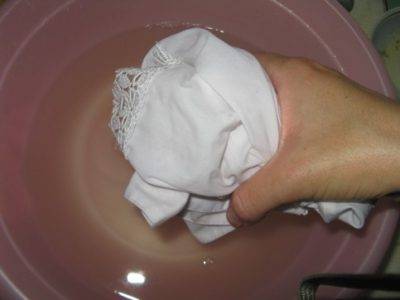
For another method, you will need hydrogen peroxide, while an excellent effect is simply guaranteed.
It is very important here to familiarize yourself with the method of using this component in advance. So, you should take peroxide and apply a small amount on the yellowed thing, while it is very important to dilute it with a little water
If there is a stain on white things, then you can apply peroxide on it separately. After that, you should wait 15 minutes until the raw materials are fully effective, and then the things are rinsed in clean water.
The following recipe involves the use of both ammonia and peroxide. These components are taken in a 1: 2 ratio, after which 30 ml of this composition with a whitening effect is dissolved in several liters of water. Everything is thoroughly mixed. Then you can put things in the composition and leave for a while.
It is very important to stir things, only in this case this recipe will have a positive effect in full, and not in part. In addition, at the end of this procedure, it is important not to forget to rinse the laundry very well.
For another method that will help you clean things at home, you need to take potassium permanganate with laundry soap. These substances perfectly bleach bed linen, which has acquired a yellow tint due to frequent washings. In this case, it does not need to be thrown away, since these things can be quickly restored using the following recipe. You need to take a piece of laundry soap and grind half of the bar with a grater. The resulting mixture is then dissolved in several liters of liquid.After that, potassium permanganate is added here, a few grains are enough.
It is important that the solution has a pale pink tint. Linen is placed in a container with this composition, it must be covered and so left overnight
In the morning, things are wrung out and washed using a washing machine. This method is considered to be very effective for cleaning laundry at home. At the same time, there is no need to be afraid that the linen will change color due to the bright color of potassium permanganate, it is just important not to overdo it with this component, but to do everything according to the instructions above. Moreover, it is potassium permanganate in the right amount that does an excellent job with the yellowness that has eaten.
The need for
When the laundry is boiled, it is disinfected. And also with the help of this event, you can give a more aesthetic look to children's undershirts, provide a snow-white look for medical gowns and bed linen. Boiling is often used in relation to:
- men's shirts;
- kitchen towels;
- tablecloths and other kitchen utensils.
Any item made of cotton and linen can be subjected to this procedure. One sometimes hears the opinion that the use of boiling as a method of disinfection is an outdated method. Many argue that in our time there are many modern methods that can effectively fight microbes and bacteria that get on clothes. In particular, the most effective methods are called:
- washing in an automatic machine under high temperature conditions;
- processing with a steamer;
- the use of detergents with an antibacterial effect;
- use of household germicidal lamps.
Of course, these methods are effective, but in some cases boiling is preferable. In life, situations often arise when you simply cannot do without it:
- removing stubborn stains from kitchen utensils and ordinary clothes. It is about eliminating traces of food, blood, baby feces and engine oil stains;
- disinfection of personal belongings of people suffering from various diseases;
- reducing the risk of recurrence of allergic reactions. For example, it is best to boil baby's underwear and it is more correct to do this in a soda solution.
There is another reason to use not modern means, but a proven method from the Soviet past. If you boil white linen and other things correctly, then you can easily restore freshness to products that have lost their attractiveness and make them crystal clear. By treating linen with boiling water, the effect of novelty occurs even with heavily washed items.
Traditional digestion procedure
The modern automatic washing machine supports the "wash and boil" program. The program is designed for cotton fabrics, the heating temperature is 95 degrees. The stain remover, designed specifically for automatic washing machines, just needs to be added to the detergent compartment.
Sunflower oil has an incredible effect on whitening and removing stubborn stains from kitchen towels. Pour ½ cup of washing powder into warm water, 5 tbsp. tablespoons of powdered bleach, stir until completely dissolved and pour in ½ cup of vegetable oil. Immerse dry towels in hot liquid.
It is not recommended to remove textiles from the boil immediately after turning off the gas. Products should be left in the bleaching solution until it cools completely.
Try to remove traces of engine oil, fuel oil from rough materials of workwear with the following composition: 10 liters of water, 0.5 kg of laundry soap, 300 g each of silicate (clerical) glue and soda. Mix, add a few tablespoons of kerosene. Boil for an hour, then boil for another 30 minutes in ordinary soapy water.
The digestion time is not rigid. On average, the duration of the procedure is from half an hour to 120 minutes.The calculation takes into account the intensity of pollution, the degree of wear and tear of clothing, the quality and composition of the bleach.
Pre-soaking reduces the digestion time to 30-40 minutes, whitening dry laundry can take up to two hours. If you need to disinfect the product, the process should take at least one hour.
Adding detergent to the bleach will help you achieve results faster and more efficiently.
Article verified
editors
Before using such a simple and well-known method, of course, you should learn about the sequence of the boiling steps. All of them must be fully implemented. In this case, you can count on getting a guaranteed result.
Boiling laundry in the usual way begins with the selected detergent dissolving in a prepared vessel filled with water. If you use laundry soap, then you must first prepare it - grate. After that, the textiles should be immersed in a warm solution.
It is important that they are completely hidden in the water.
There are no strict rules about how long boiling should take. The container should be on the stove for 30-120 minutes. The duration of the digestion of the laundry largely depends on the composition of the solution and on how dirty the things are. When the fire is turned off, it is necessary to leave the vessel on the stove to cool things down a little.
After that, carefully wring out the boiled laundry, and then rinse it twice in clean water.
Then you should start drying. For this, things are hung on the street. This is best done when the weather is sunny. In this case, textiles and other boiled things will acquire incredible freshness.
It should be noted that the procedure for boiling linen appeared long before the invention of washing machines and the beginning of the production of powders and various bleaches. However, despite this, after such a procedure, the laundry takes on a better look than after washing in an automatic machine.
Synthetics
Look for manufactured products that have instructions that they are suitable for washing synthetics. Do not use "Whiteness" and boil. From folk remedies, ammonia, peroxide, salt and soda are suitable.
Atlas and silk are vinegar tolerant. Laundry soap, ammonia and peroxide are mild.
Lace
Lace lingerie is the most delicate. It is easily deformed from washing in a drum. Therefore - only hand wash and soak. Eliminate friction, twisting and chlorine products. What suits lace underwear: aspirin, ammonia, peroxide, lemon, laundry soap.
What you need for the procedure: tools and tools used
For high-quality digestion of linen, you need to acquire a certain inventory. In fact, you only need 2 things.
-
Boil (large saucepan or deep wide basin). It is better to boil the laundry in galvanized or enameled containers. And no rust spots on the surface! Otherwise, the fabric may become covered with red stains, which you will not be able to remove.
-
Large wooden tongs. They are needed in order to stir the laundry and take it out after boiling. If the forceps are not available, they can be replaced with a sturdy stick. It should be smooth and clean.
Recipes for effective remedies
In addition to auxiliary tools, you need to use detergents that will ensure things are clean and fresh. You can of course use regular laundry detergent or liquid bleach. But for the effect to be stronger, apply one of the following formulations.
-
A mixture of powder and bleach. Pour powder and good bleach into a saucepan (half a glass each for 10 liters of water) and mix thoroughly.
-
Salt and bleach. Mix any chlorine bleach (for example, whiteness) with table salt (500 g per 10 liters of water) and add to the saucepan.This mixture will not only work well with whitening, but it will also give your garments a shine.
-
Washing powder with potassium permanganate. The mixture is successfully used for disinfection, especially in cases of head lice. Dissolve the powder in water (1/2 cup per 10 liters) and add a few crystals of potassium permanganate. The water should take on a light pinkish tint.
-
Hydrogen peroxide powder. The blend works great on berry, fruit and coffee stains. First dissolve in 10 liters. water 1 cup of powder, and then add ½ cup of hydrogen peroxide 3%. It takes no more than 30 minutes to boil the laundry in such a solution.
-
Baking soda with hydrogen peroxide will turn gray textiles white and remove sweat stains from T-shirts and shirts. For 10 liters of water, ½ glass of each product is taken, the solution is thoroughly mixed. Boil things in this mixture for 30 minutes.
-
Peroxide and ammonia perfectly bleach and remove dirt. 10 liters. water will need 4 tablespoons of each product. Things need to be boiled for up to 50 minutes.
- Powder, bleach and vegetable oil. In 10 liters. water successively add 5 tablespoons of powder bleach (for example, "Persol"), ½ cup of washing powder and 125 ml of any vegetable oil. Boiling with this formula will help remove stubborn grease stains.
What to boil colored fabrics with
It is generally accepted that boiling is contraindicated for painted things and linen with a pattern, since it will "wash" the paint from the fabric. Experienced housewives can argue with this judgment.
When boiling colored laundry, do not use peroxide and chlorine-containing substances, as they have a bleaching effect.
There are gentle products that will perfectly cope with dirt on colored things during boiling, without diminishing the brightness and saturation of the shades. The only condition: do not use products with a whitening effect, that is, bleach and peroxide.
- Pour 40 g of laundry soap, crushed into shavings, into a pot of water (10 liters). Mix thoroughly until completely dissolved. Add 4 tablespoons of baking soda and stir again. Put things in the solution, leave to soak for half an hour and then start boiling.
- Boil the previously washed laundry in a mixture of salt and soda (250 g of each substance per 10 liters of water). the solution must be thoroughly mixed, it takes no more than 30 minutes to boil the laundry in it.
Oxygen bleach
The industry produces all new types of bleaching agents for things. The main groups of funds offered by trade:
- optical;
- based on chlorine-containing compounds;
- oxygenated.
Optical
The peculiarity of these funds is the ability to reflect light with special particles. This achieves a whitening effect. Most laundry detergents have reflective particles that make things look whiter. But they are not able to wash heavily soiled items. When washing with such powders, you will notice that the colored laundry has faded.
Chlorine
Often things are whitened with whiteness - a bleach-based product. Its popularity is high due to its low cost. The disadvantage of this laundry detergent is its aggressive effect on the structure of the fabric. After several washes with this bleach, gaps and holes may appear in the fabric.
To reduce the wear of the fabric, if you want to bleach with whiteness or other means with chlorine, you should dissolve 1-2 tablespoons of an aggressive product in water before immersing the laundry.
In addition, they are suitable only for washing by hand, because they can damage the units in the washing machine. They also have a pungent odor.
Oxygenated
This is a new generation of bleaches. They are able to delicately return whiteness even without boiling, and are suitable for fabrics of any composition. There are two types of oxygen-containing bleaches available: in bulk or in solution.
Their gentle formula allows the use of bleaches as an additive for washing in machines, without the need for pre-soaking. Lingerie, which has turned yellow, will become whitened, and colored things will regain their shade. The cost of bleaching products with oxygen content is much higher than chlorine ones.
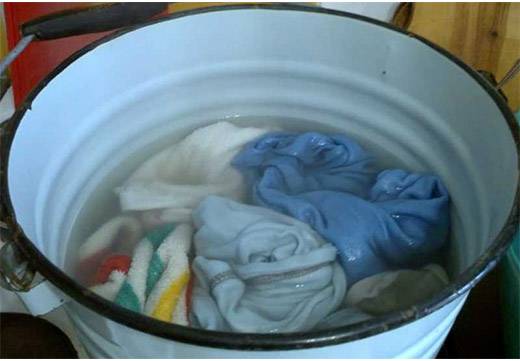
Most manufactured goods quickly and the first time get rid of stains on clothes, if the pollution is relatively fresh. To bleach items such as lace lingerie, choose a method according to the directions on the label and the instructions on the product itself.
Why is it needed
Firstly, all housewives are faced with difficult to remove stains that cannot be removed with only one machine wash. Such contaminants include fat, fruit and vegetable juices, grass, and wine. You have to not only soak and wash, but also boil the laundry in a saucepan. Sometimes this is the only way to save your favorite tea towels, pillowcases and sheets.
Secondly, boiling is a great way to disinfect things at home. High temperatures kill germs. It is possible to "cure" linen from various infections by boiling it with antibacterial agents. Boiling the laundry also makes it softer and reduces the risk of allergic reactions.
Thirdly, this seemingly irrelevant way of washing helps to return things to their original whiteness and softness. Even if things are already rough and washed to a dirty gray shade. As you can see, boiling is very beneficial in the home where the baby is growing. It is useful to boil things, but you should know several means, since just boiling in water will give little
Also, read the safety measures, because you have to work with a boiling liquid, and this requires caution and attention.

